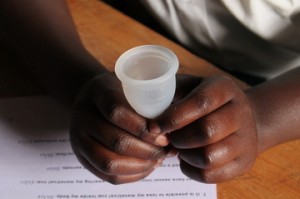We spend all this money on humanitarian efforts building schools in developing countries such as Kenya, however, there is still a critical factor which holds back up to 50% of the students these school are meant to serve. Girls in these places can miss up to 6 weeks of school per year simply because 80% cannot afford to buy menstrual pads, which makes them far more at risk of dropping out of school, leading to a higher risk of teenaged pregnancy and HIV/AIDS.
Some companies such as ZanaAfrica are tackling this problem by providing schoolgirls with disposable and renewable pads, as well as educational material about the importance of menstrual hygiene. They’ve thought a remarkable amount on the different aspects of the marketing mix that may inhibit families from being able to access these materials on their own and have addressed it through cheaper pricing, different packaging, and better messaging through the distribution of educational comic books. However, this poses a greater problem that they have not addressed– in the selection of renewable and disposable pads they provide, the renewable ones are only meant to be used when funds are low, and thus only when users cannot afford the more wasteful counterparts.
Not only are sanitary pads not compostable, they are made of 90% plastic. There is also a growing problem, especially in developing countries, when waste disposal systems lack the sophistication to handle the increased waste. Often, soiled pads are merely thrown into local rivers or tossed into garbage heaps accumulated in the streets which lead to both environmental and health safety concerns. It is also estimated that there are 432 millions pads that are thrown out every month globally, which are then left in the environment or land fill to sit for up to 800 years.

A menstrual cup is passed around the workshop for femmeinternationale.
Organizations such as Goonj are creating cloth reusable menstrual pads for women in India to mitigate this damaging phenomenon, and other such as FemmeInternationale are providing reusable silicon menstrual cups that are reusable for up to 15 years.
Menstrual cups are slowly coming into mainstream even in the western world as a convenient, sustainable and budget friendly alternative to tampons and pads. In a 2011 survey, 91% of women who tried the menstrual cup said they would switch to one. The cost of a cup, which with proper care can be reused for a decade, costs about the same as tampons or pads for a single year.
Hey Sarah, I talked about menstrual cups in my blog, too, and you left a comment. I’m here again because I want to expand on this concept. Periods are something women experience every month and the lack of investment and awareness on this topic is taking a toll on women’s lives and the environment. I agree that menstrual cups are a great solution for developing countries. I can’t believe girls will miss school because they’re on their periods. Providing them with menstrual cups is such a more sustainable solutions to a great extent. I just wish the concept will become more mainstream in the upcoming years.
I wish companies that produce disposable pads and tampons will eventually be forced to also produce menstrual cups and cloth pads, as a result of the sustainability trend. As of today, getting a cloth path or a menstrual cups, even in the western world, is not as easy as getting disposable one’s.
There are so many different factors that are holding the use of a menstrual cups back. The word of mouth and awareness really is the best thing we can do to promote the use of this products, and I’m so happy to see you write a blog about it.